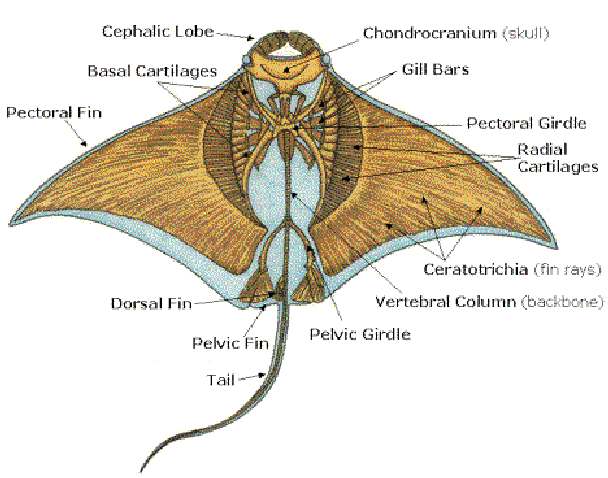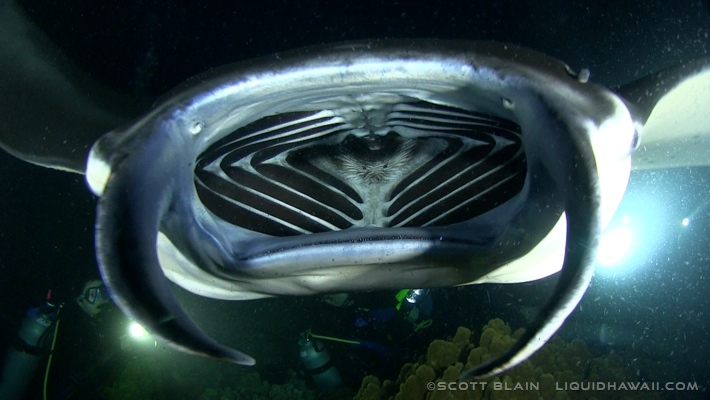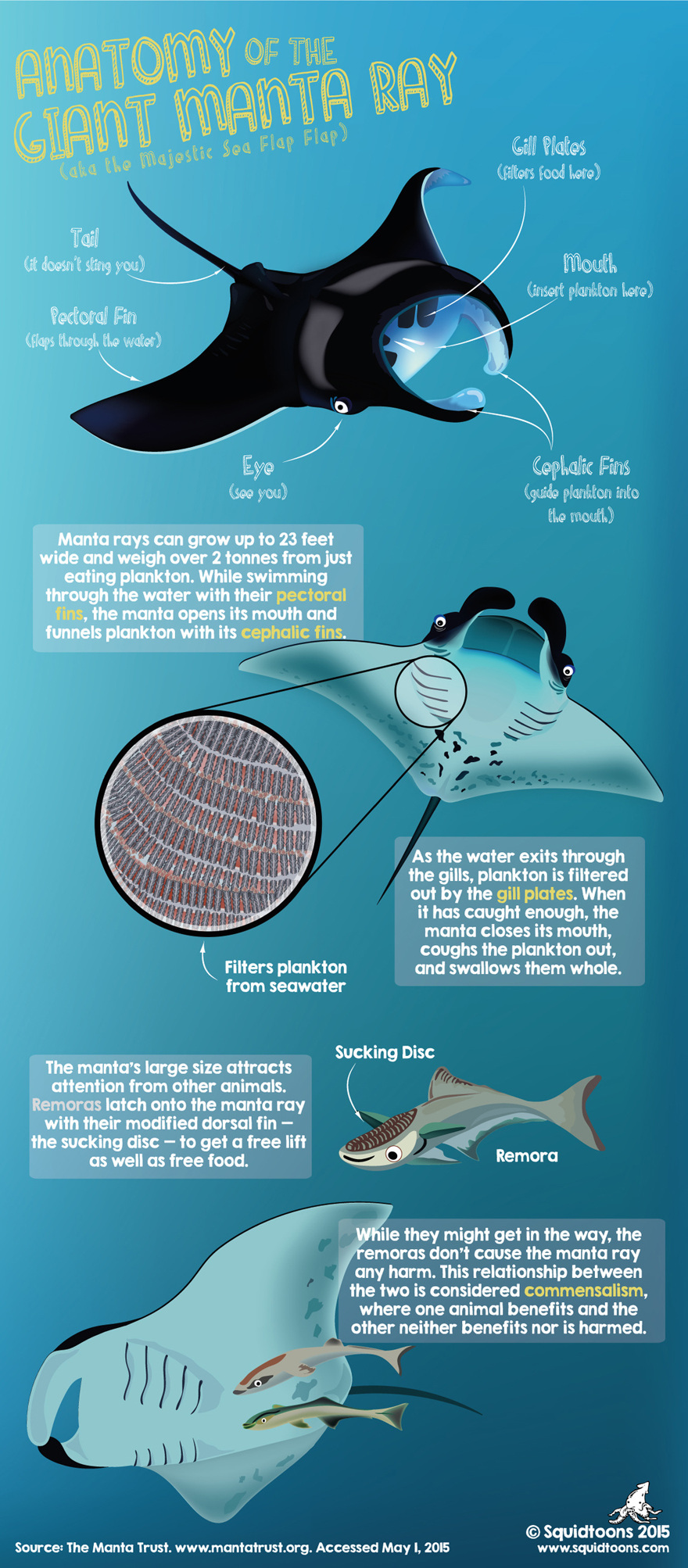All About Mantas
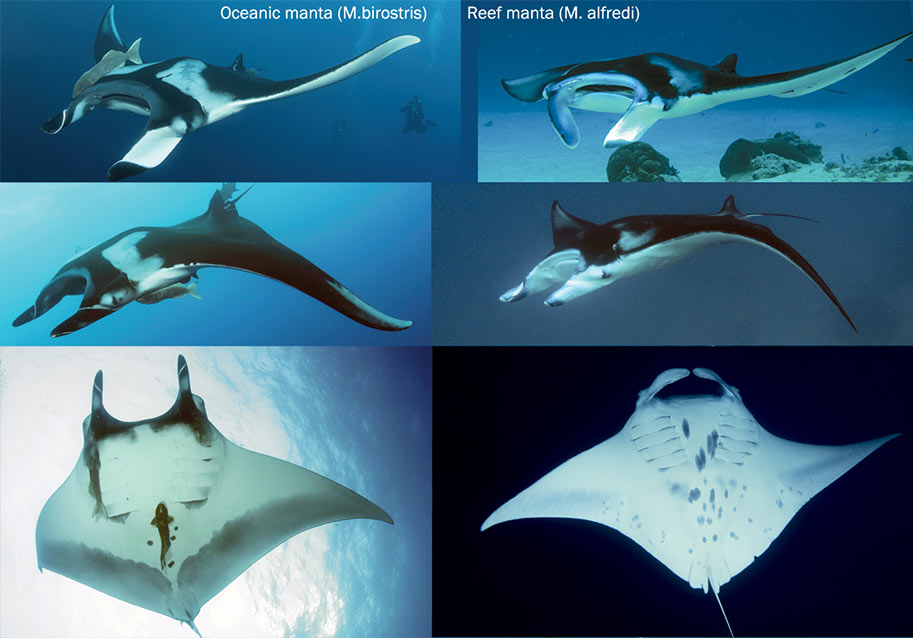
What do we eat?
Despite their status as an ocean giant, manta rays feed on some of the smallest organisms in the sea! They are planktivores, feeding especially on zooplankton; tiny animals such copepods, mysid shrimps and arrow worms. Mantas are known to make seasonal migrations in order to take advantage of particularly abundant areas of food.
How big do we grow?
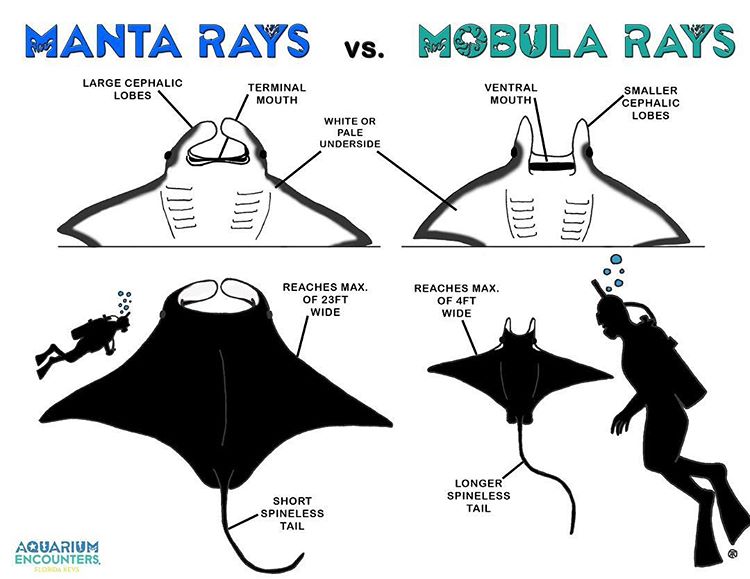
Where do we live?
Both species live pelagic lives in the open ocean, visiting reefs to feed and be cleaned. However, oceanic mantas have the wider geographic range of the two species occurring in tropical, sub-tropical and temperate waters. This species is more migratory in its nature, commonly sighted along productive coastlines with regular upwellings, oceanic island groups and offshore pinnacles and seamounts. The resident reef mantas are more commonly sighted inshore around coral reefs, tropical island groups, atolls and bays, as well as along productive coastlines. As the name suggests, this species is more resident to tropical waters with smaller home ranges. Around Micronesia, both species of mantas can be found, although population studies on each species are relatively rare.
Manta Anatomy
